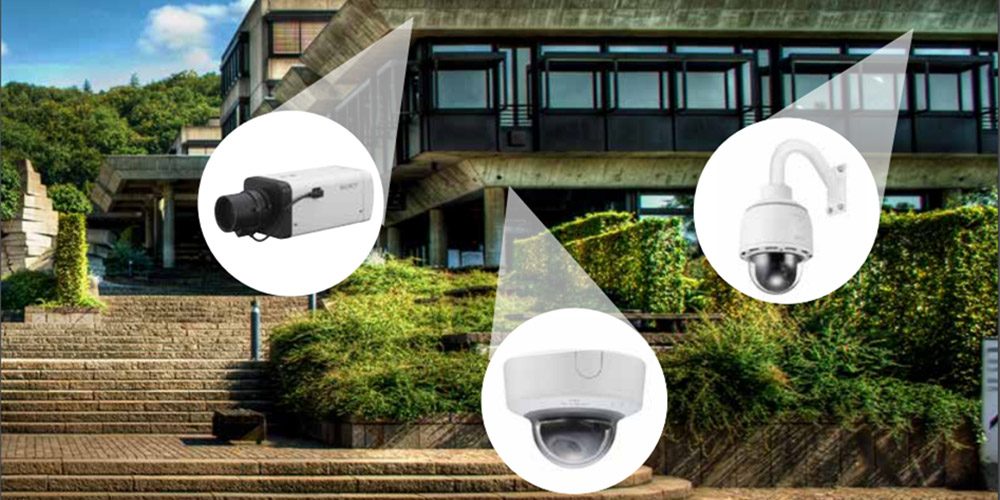Do Security Cameras Really Make Campuses Safer? School and Hospital Pros Answer
Campus Safety’s 2018 survey asked hundreds of school, university and hospital security professionals if security cameras are worth the investment. Here’s what they had to say.

Editor’s note: SSI sister publication Campus Safety‘s 2018 Video Surveillance Survey asked campus security professionals questions about their surveillance systems and what types of challenges they face securing their campus.
Security professionals should use this information to tailor their offerings in the education and hospital verticals.
Most people want to know once and for all if video surveillance systems actually help campus protection professionals do their jobs. They also want to know just how important things like system reliability and video clarity are. Campus Safety got the answers to these and several other interesting questions in our 2018 Video Surveillance Survey.
More Than 9 out of 10 Campuses Use Their Cameras Daily or Weekly
It turns out that 96% of survey respondents that have video surveillance systems installed on their campuses say these systems frequently (58%) or sometimes (38%) provide evidence for investigations.
Four in five say their security cameras frequently (24%) or sometimes (56%) prevent crime, and 86% say these systems frequently (50%) or sometimes (36%) help their departments monitor their campus during other situations when safety or security issues could arise. Nearly three out of four respondents (74%) say their video surveillance systems frequently or sometimes act as force multipliers.
These results show that security cameras are a valuable tool for most school, university and hospital public safety and security departments.
That’s probably why 94% of this year’s survey respondents say their campuses use their security cameras daily or weekly. That’s also most likely why they believe factors like clarity of video and system reliability are so important. More than four out of five respondents rate image quality and reliability as extremely important. On a scale from one to five (with one being not important at all and five being extremely important), both clarity and reliability have an average rating of 4.8.
Charts containing all of the survey findings can be viewed here.
When drilling down further into reliability, 76% of respondents say they want their cameras to work consistently for more than three years. Nearly four in five respondents (79%) replace their cameras when needed.
Some of the ways campuses uses their video surveillance systems include monitoring after-hours activities, parking lots, employees, helicopter pads and sealed roof-top areas, traffic, school bus fleet parking lots and bus arrival times, doors and access points, residence halls, event crowds, weather, at-risk patients who require a sitter, perimeters, hallway traffic and use of bathrooms.
Security cameras are also used in lost-and-found investigations, to verify the facts about incidents, to determine the number of officers needed to respond to a situation, in training, to locate missing persons, to back-up or refute children’s versions of incidents and in conflict resolution.
Additionally, campuses use their video surveillance systems for live tracking, scanning the campus for patients who walk out, maintenance documentation, class size assessment, license plate reading and policy enforcement.
ED Incidents, Theft and Visitor Management Are Top Concerns
New to this year’s survey is a ranking of the various security issues facing healthcare and education.
For higher education, on a scale from one to five, theft ranks as the most challenging problem (3.4), followed closely by “crime from the community coming onto campus” and “incidents during the evening or after hours” (both receiving a 3.2 average score from respondents).
Hospital and K-12 campuses rate after-hour incidents as one of their top issues (3.4 and 2.9 respectively). Parking lot security ranks as the No. 4 challenge for colleges and hospitals.
Interestingly, 28% of college and university respondents say their institutions highlight their video surveillance systems in the marketing materials targeting prospective students and faculty members.
K-12 respondents say visitor management is their biggest challenge, rating it at 3.2. General student misbehavior comes in second place with an average score of 3.0.
All of these results can be seen here in charts from the survey.
Overall, hospitals rate their top two problems as much more challenging than K-12 and higher ed rate their most difficult security issues. Healthcare respondents give 3.9 average scores to “emergency department incidents” and “incidents involving behavioral health patients.” That’s a big jump from higher ed and K-12 respondents, who rank their top security issues at 3.4 and 3.2, respectively.
Other issues that survey participants mentioned include sporting event management, cyberbullying, truancy, incarcerated patients, wild animals, illegal vending, smoking, and slips and falls.
Check out the full survey findings here, and then see what campus security professionals had to say regarding their video surveillance system(s).
If you enjoyed this article and want to receive more valuable industry content like this, click here to sign up for our FREE digital newsletters!

Security Is Our Business, Too
For professionals who recommend, buy and install all types of electronic security equipment, a free subscription to Commercial Integrator + Security Sales & Integration is like having a consultant on call. You’ll find an ideal balance of technology and business coverage, with installation tips and techniques for products and updates on how to add to your bottom line.
A FREE subscription to the top resource for security and integration industry will prove to be invaluable.









